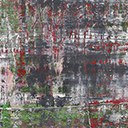0200 (Dis)Figuration of Memory in, around, and beyond Gerhard Richter's Atlas: Between Photography, Abstraction, and the Mnemonic Construction
Identifiers (Article)
Identifiers (Files)
Abstract
Gerhard Richter’s Atlas is a collection of photographs and sketches that the artist started to assemble in 1961. This article aims to demonstrate that Holocaust imagery plays a unique and irreplaceable function in Atlas, creating paths throughout the project and pointing towards some of Richter’s most important ideas and contexts within which his pictorial work comes into being. The article places particular emphasis on the photographs assembled in panels 807 and 808 of Atlas, which are the basis for Richter’s series of abstract paintings entitled Birkenau paintings, from 2014. The article argues the importance of this series, making a case for a different interpretation of Atlas’s dynamics, and pointing out alternative ways of addressing the tensions between photography and painting – and, in particular, figuration and abstraction – that pervade Richter’s practice. The themes concerning Richter’s position on photography and the role played by the medium in the pictorial exploration of the traumatic past are thoroughly discussed in the article, generating new insights into the concept of the historical image in the work of the German artist.
Statistics


License

This work is licensed under a Creative Commons Attribution-NonCommercial-NoDerivatives 4.0 International License.



